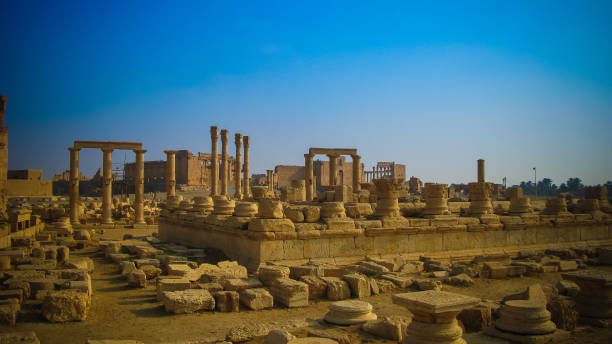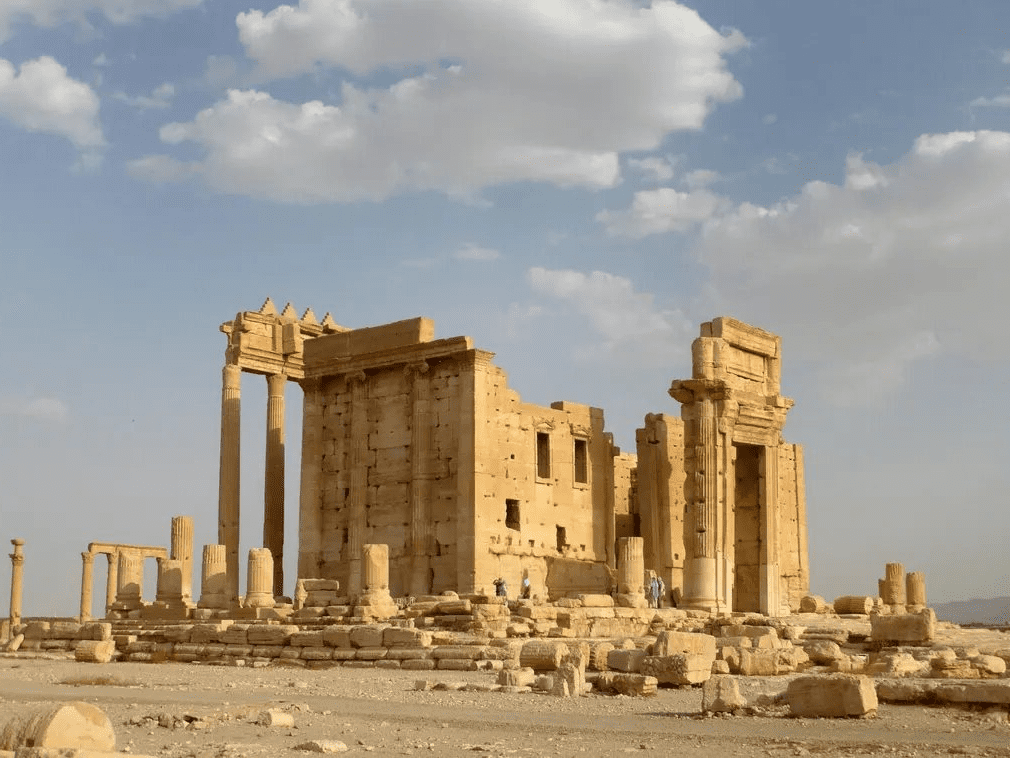Lysette ventured into Syria with a mix of trepidation and fascination, drawn by its rich history and cultural tapestry. Exploring Aleppo’s ancient citadel, she marveled at its resilience amid modern conflicts, a testament to centuries of civilization. In Damascus, she wandered through the labyrinthine streets of the Old City, where the scent of spices mingled with the call to prayer, weaving a sensory tapestry of the past and present. Journeying to Palmyra, she stood in awe of its majestic ruins, once a beacon of prosperity along the Silk Road. Despite the turmoil, Syria’s beauty and resilience left an indelible mark on Lysette’s soul.
Nestled in the heart of the Middle East, Palmyra stands as a testimony to the enigmatic beauty of Syria’s ancient treasures. With its rich history and architectural marvels, this lost city has captivated the imagination of explorers and historians alike. Discovering Palmyra unveils a journey through time, revealing the ancient splendor that once flourished in this remarkable site.

Discovering the Enigmatic Beauty of Palmyra, Syria: A Journey through Time
Once you step into Palmyra, you are instantly transported to a world long gone. This UNESCO World Heritage site boasts ruins dating back to the 2nd century AD, showcasing the grandeur and sophistication of the once-thriving city. The Temple of Bel, with its towering columns and intricate carvings, exemplifies the architectural prowess of the ancient Palmyrenes. As you wander through the Temple of Baalshamin or the Great Colonnade, you cannot help but marvel at the intricate details that have stood the test of time.

The desert landscape surrounding Palmyra adds an ethereal charm to its mystique. The juxtaposition of sand dunes against the ancient ruins creates a breathtaking panorama that feels almost surreal. The golden hues of the sunset casting a warm glow on the sandstone structures further enhance the allure of this timeless land. As you explore the city, you cannot help but be captivated by the sense of wonder and tranquility that pervades the air.
Unveiling the Ancient Treasures of Palmyra: Exploring Syria’s Lost City
Palmyra’s history is as captivating as its ruins. This once-thriving trading hub served as a vital link between the Mediterranean and the East, making it a melting pot of cultures and traditions. Its strategic location on the Silk Road ensured a constant flow of goods and ideas, enriching the city’s tapestry of life. The ruins themselves bear witness to this cosmopolitan past, with influences from Roman, Greek, and Persian civilizations.

The Architectural Marvels of Palmyra
Among the most iconic structures in Palmyra is the Arch of Triumph, a monumental gateway that welcomed visitors to the city. This grand monument serves as a testament to the city’s prosperity and grandeur during its heyday. As you walk through the arch, you cannot help but imagine the bustling streets, the vibrant markets, and the diverse array of people who once passed through here.
The Temple of Bel
The Temple of Bel is perhaps the most celebrated structure in Palmyra. Dedicated to the god Bel, it was once considered one of the most important religious sites in the region. The temple’s impressive facade and intricate carvings reveal the devotion and artistry of the Palmyrene people. Standing amidst the ruins, one can sense the spiritual significance this site held for ancient pilgrims.
The Great Colonnade
The Great Colonnade, a long street lined with majestic columns, invites visitors to stroll along its path and imagine the vibrant life that once thrived here. Each column stands not only as a support for the architecture but also as a reminder of the city’s grandeur. Walking along the colonnade allows you to envision the bustling marketplace, the meeting of cultures, and the exchange of ideas that characterized Palmyra.
Palmyra’s Cultural Significance: A Melting Pot of Civilizations
Palmyra was not merely a city; it was a significant cultural crossroads that facilitated interaction among various civilizations. The confluence of different traditions gave rise to a unique blend of art, architecture, and social customs. This diverse cultural heritage is evident in the ruins, where one can find elements that reflect Roman, Greek, and Persian influences.
The Role of Trade in Palmyra’s Development
Palmyra’s strategic position on the Silk Road made it an essential hub for trade between the East and West. Caravans laden with silk, spices, and precious stones would stop here, enriching not only the economy but also the cultural fabric of the city. The wealth generated from trade led to the construction of magnificent structures and the flourishing of arts and sciences. The city became a beacon of prosperity and innovation, drawing scholars, travelers, and merchants from distant lands.
The Resilience of Palmyra through Turmoil
Despite the challenges that Syria has faced in recent years, the resilience of Palmyra’s ruins serves as a symbol of hope and a reminder of the enduring beauty of our shared human history. The city has endured invasions, natural disasters, and the ravages of time, yet it remains a powerful testament to the human spirit and creativity.
Visiting Palmyra: Practical Tips for Travelers
If you ever find yourself in the Middle East, embarking on a journey to Palmyra should be a priority. Here are some practical tips to enhance your visit:
Best Time to Visit
The ideal time to visit Palmyra is during the spring (March to May) and fall (September to November) when the weather is mild and pleasant. Summer can be extremely hot, making exploration challenging.
Getting There
Palmyra is accessible by road from major cities like Damascus and Homs. Travelers can hire a car or join guided tours that include transportation. Be sure to check the current security situation before planning your trip, as conditions can vary.
What to Bring
When visiting Palmyra, wear comfortable walking shoes, as the terrain can be uneven. Bring plenty of water, sunscreen, and a hat to protect yourself from the sun. A camera is essential to capture the breathtaking views and architectural details.
Conclusion: Embracing the Magic of Palmyra
Palmyra is more than just a collection of ruins; it is a journey into the heart of history and a testament to the resilience of human creativity. The ancient city stands as a reminder of the interconnectedness of cultures and the importance of preserving our shared heritage. So, if you find yourself in the Middle East, make sure to experience the magic of Palmyra firsthand, and let its storied past inspire your own adventure.
